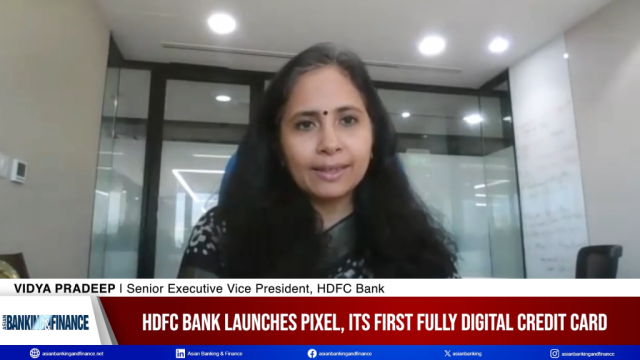
Fintech's ‘coming of age' and what it means for ASEAN FIs
In years to come, February 2016 may well be considered as the month when “fintech” officially came of age.
Of course financial technology is not in itself a new phenomenon. From online banking to blockchain applications, there have been a myriad of new products, processes and firms relentlessly disrupting incumbent institutions for years now.
Nonetheless February marked the start of a new era for existing players and new entrants alike.
In a letter to the G20 dated February 22nd, the chairman of the Financial Stability Board Mark Carney sounded a preliminary warning about what he called the “potentially transformative implications” of fintech, and promised greater scrutiny from authorities in future. Indeed, he said that a number of existing innovations were already under review, with the FSB scheduled to report its findings in September.
Just a few days later the European Parliament called for the creation of a task force to examine distributed ledger technology, and in March, the International Organization of Securities Commissions expressed its concerns about the growing risks to financial markets from fintech innovations.
At a superficial level, these events simply validate a long-known reality - fintech is now a meaningful global movement.
But they also highlight how concerned global authorities are becoming about the way that new players – both consumers and corporates - are altering the risk profile of the financial industry as a whole.
Judging by the growth statistics, the regulators are justified in their focus.
In 2015, global investment into fintech continued its exponential growth trajectory, reaching a record of some 19 billion US dollars, with around a quarter of that in Asia.
Money transfer and savings/investment products were the fastest growing sectors, and as EY’s “FinTech Adoption Index shows” the new product growth was matched by a growth in consumer demand, with young, high income city-dwellers showing the strongest appetite for innovation.
While the mounting attention from international regulators is unlikely to have a significant short term impact on those trends, for companies already scrambling to deal with a constantly changing business landscape the longer term promise of more regulatory disruptions presents yet another digitalization headache.
This future challenge is one of the key themes highlighted in a new report from EY on digital risk and compliance issues face by financial institutions operating in ASEAN.
In a series of interviews with senior executives from the banking, insurance, as well as the wealth and asset management industry across ASEAN, the report outlines the digital value creation plays of regional industry players, identifying also major challenges presented by fintech and digitalization, and proposing a best-practice framework for successful execution.
What comes through clearly from the conversations is that regional industry leaders are, for the most part, cognizant of the challenges ahead, and are preparing to meet them.
Where challenges do arise, they tend to revolve around two major themes: compliance and customer adoption.
For ASEAN institutions especially, doing business across multiple borders is fraught with compliance issues. Differing priorities and regulatory approaches among the ASEAN member countries make for an asymmetric and constantly shifting landscape, and a lack of technology expertise within some of the authorities suggests change will be uneven and long term.
Meanwhile customers are increasingly demanding a whole new level of interaction and service which, if improperly delivered, is likely to generate more costs than benefits for providers.
But while both issues may appear to be external challenges, in reality the biggest threat to future success lies within the institutions themselves, and nowhere is this reality more urgent than in the field of compliance and risk management.
By necessity, the role of the compliance team has always been a conservative one and its function represented as something of an independent gatekeeper. This role needs to evolve. The requirement now is for compliance to become a stakeholder in the transformation and the enabler of change, because without the real-time engagement and consultation of compliance the innovation and solutions demanded by digitalization cannot be achieved.
The principle holds true when considering customer relationships.
For many financial institutions, the digital age still amounts to little more than a new set of tools to be adopted and integrated into the firm. New technologies are seen simply as offering marginal enhancements to existing practices, sometimes as an impetus to modernize legacy systems, sometimes a chance to improve operational efficiency.
But only business models that re-align the relationship with customers can hope to achieve longer term and more profitable engagements built on utilizing the full potential of rich data, mobile technologies, social media and the cloud.
Embracing these technologies effectively to fully monetize new customer relationships means creating operational environments that prioritizes speed, innovation and responsiveness to customer needs.
Those that continue to view digital technology as incidental and the customer relationship as fixed will likely experience digital technology as nothing more than a new cost center, while those that recognize the power of transformational change will prosper.
Such change does not occur overnight, however. Effective digital transformation requires a new execution model, strategy that begins with a clear vision, embraces changes to institutional culture, and prioritizes people, technology and new processes.
The journey from status quo to new age is still in its early stages, and changing entrenched corporate practices and mindsets is no simple task. For more insights, visit https://ey.com/digitalrisk
Written by Liew Nam Soon, Managing Partner, Financial Services, ASEAN























 Advertise
Advertise







